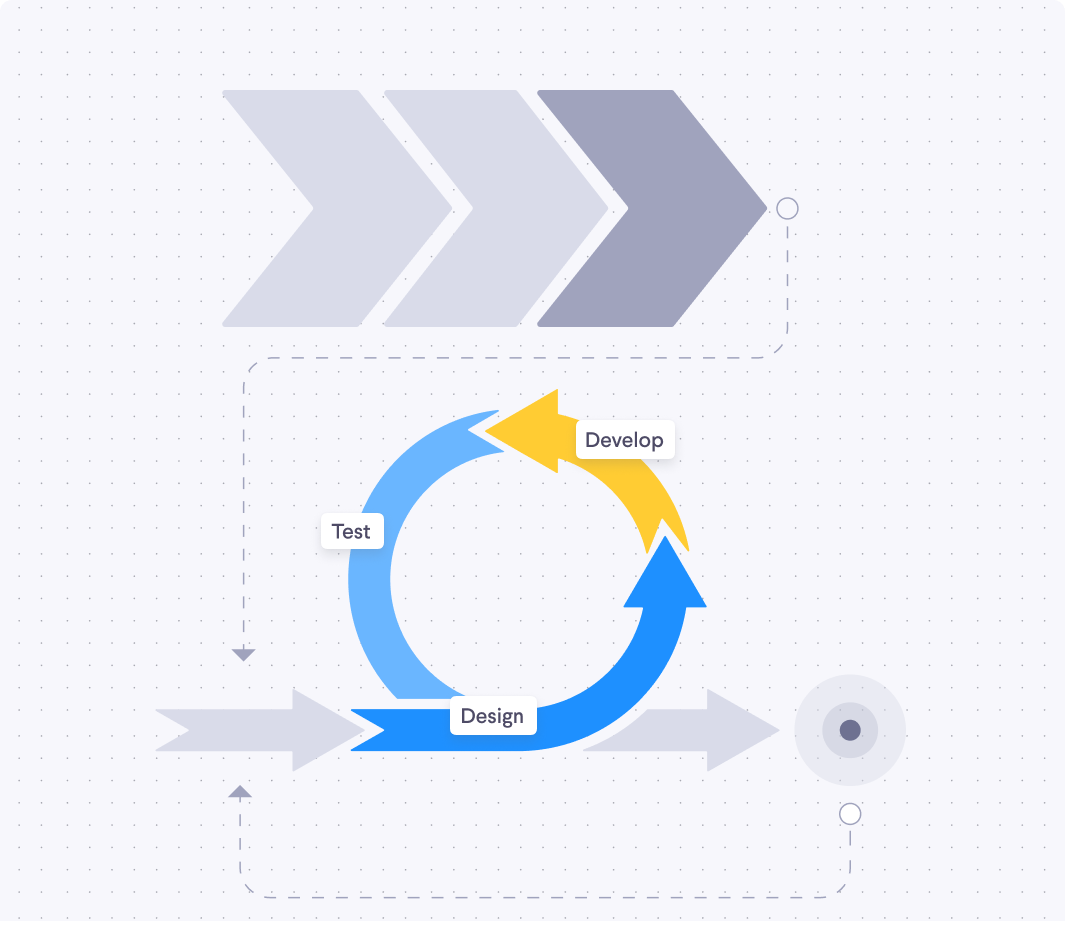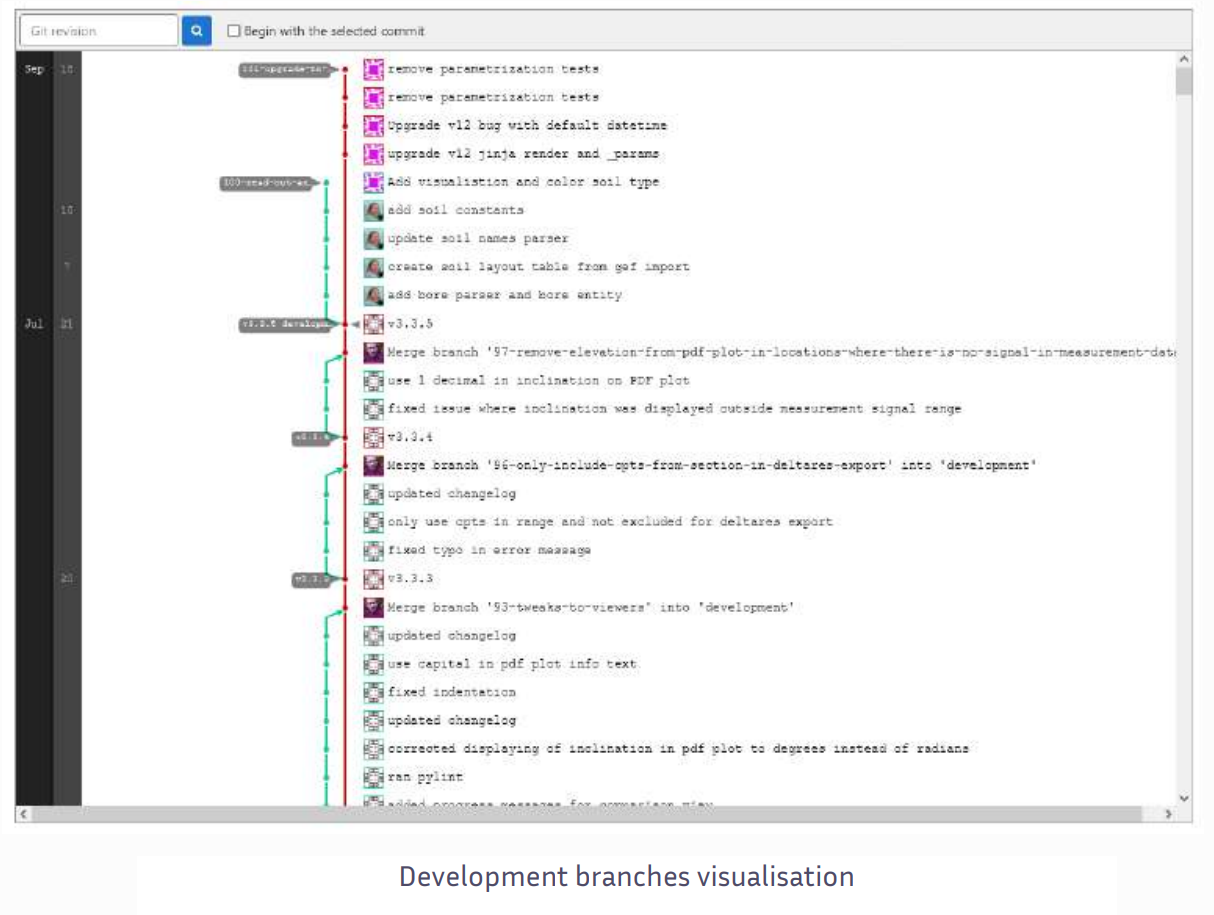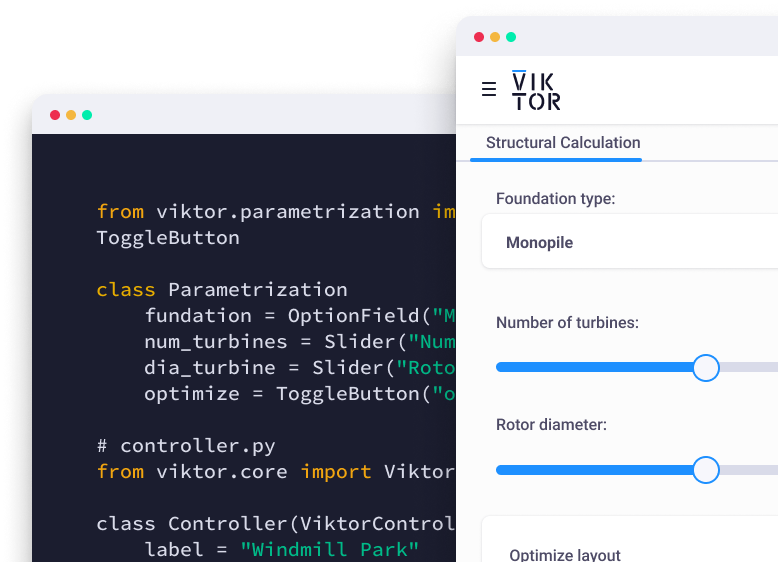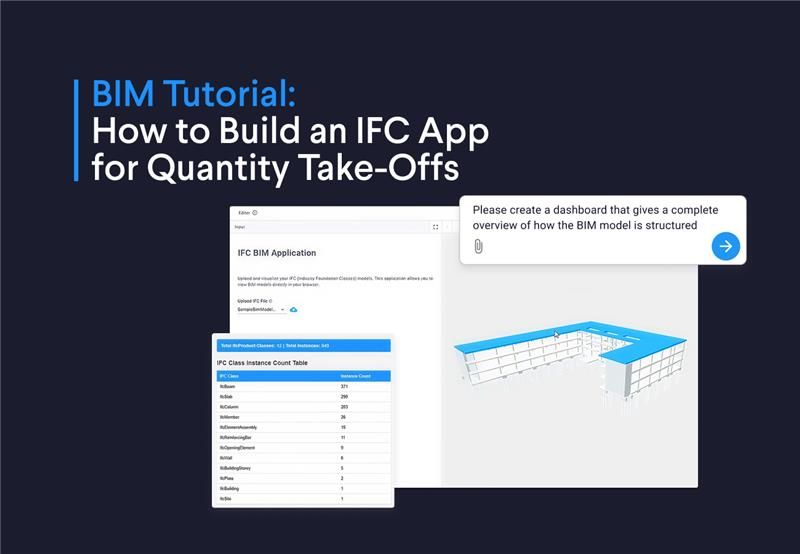March 24, 2024
How to start coding your application

by VIKTOR


Build successful applications
Learn how you (developer, engineer, end-user, domain expert, project manager, etc.) can contribute to the creation of apps that provide real value to your work.

A mock-up is a good place to start
Just as with the entire development process of your application, with coding it is also important to dream big but start small. For example, by starting with a mock-up user interface. You can build this interface within a day to get a clear picture of how the elements (parameters, input, and output) interact with each other. You can add some dummy calculations, models, graphics, and reports to complete the picture. Together with the end-users and product owner, you can look at the mock-up and decide on which parts are good and which things should be adjusted or changed. This way, you can quickly get a broad view of what your end-product will look like, without putting lots of effort into completely working out all kinds of different options.
Start programming the logic
Only after you have built a successful mock-up, the coding of the logic can start. Don’t worry, not all at once. Start with something small and expand from thereon, according to the product backlog you made.
We recommend trying that you try to connect all the islands of information first. Try creating a fully functional but very simplistic code that goes through all parts of the workflow. Just take a very simple calculation, it does not matter if you hard code some things or it only works for one case. The most important thing that you want to prove here is that you are able to automate the workflow as planned. The worst thing that can happen is that you fully develop one part of the workflow and later discover that you are not able to connect that part to the next one.
Once you have verified that the complete system is working, you can start improving each part and make it more complex.
“First, solve the problem. Then, write the code.” Stijn Jansen Head of Product at VIKTOR
Working with other developers
Find a system to work with
On bigger projects, there are often multiple developers working on writing the code. To keep a clear overview, it is good to have a structured way of working and are somehow able to keep track of everyone’s progress and adjustments. This is also vital to keep all parts of the code compatible with each other.
We recommend using a code sharing platform with a version control system, such as GitHub or GitLab. These platforms have several benefits, such as:
Version control: Everyone that is working on a code will always work with the right of it. No version 1, version 2, version 3, flying around anymore. If someone changes a part of the code, the system immediately tracks this change, and everyone is immediately able to see it as well.
Improved collaboration: Code sharing platforms allow people to work on one big project, but still have their own separate ‘branch’ (part of the code) within. You are able to change your own code and later merge the branch into another branch and make sure everything stay compatible. You can also see and check the code that others are working on.

Issue management: To remain in control over the different parts of the code that are worked on, different issues can be created for specific features. Each of these issues can be linked to one of the user stories. On a code sharing platform, you can link deadlines to issues as well. This way, the planning and controlling the project is done easily and all in one place.
Sustainability through sharing: Because it is possible to check each other’s code when you’re using a code sharing platform, developers are more likely to write code that other people will be able to understand. This benefits not only other people but developers themselves as well. When others have difficulties understanding your code, you will have difficulties understanding your own code too in a couple of weeks. Due to the sharing aspect, working on a platform basically forces developers to write futureproof code that enables them and others to work with on the long term. So, even after you may have taken a break from it for a while.
Sustainability through commenting: Another functionality of the platform is that it allows people to add comments in the code. This way, you can ask specific questions, suggest changes with a clear focus, or just look at it from different perspectives. The ability to check on each other’s code ensures for a higher quality code. Bugs are detected and solved quickly. You can also help each other with difficult parts and have discussions on about how things can be done differently or more efficient. When you have to explain your code to a colleague, it makes it clearer for both parties. This way it also becomes more concise with rest of the code.




